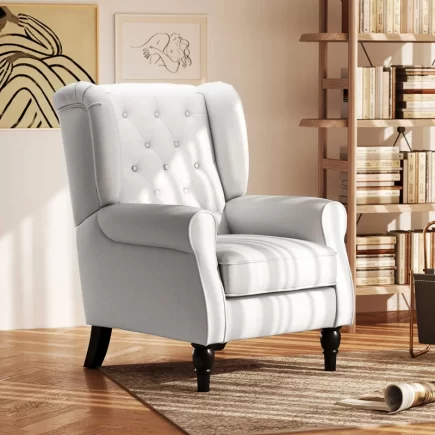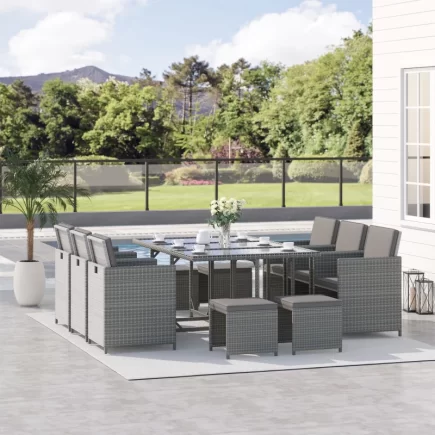
In the world of interior design, small changes often create the biggest impact. One such change easily overlooked but incredibly functional is adjusting the height of your end table. Whether you’re struggling with an end table that’s too low for your armchair or simply looking to add better visual balance to your living room, raising your end table is a clever, affordable way to solve a common decor dilemma. But here’s the twist: not all elevation solutions are created equal.
Evaluate Before You Elevate: The First Step

Before making any changes to your end table, it’s important to understand the structure you’re working with. A thoughtful evaluation helps prevent instability, mismatched styles, or short-term fixes that won’t hold up. Start by measuring the gap between the table surface and the nearby armrest to determine exactly how much height you need to add. This single measurement sets the stage for a successful transformation.
Material and weight are equally important. Heavier tables offer more modification options, from leg replacements to structural add-ons. Lighter pieces, on the other hand, need gentler methods to avoid compromising stability.
Method 1: Elevate with Furniture Risers

If you’re looking for a fast and easy way to raise your end table without making any permanent changes, furniture risers are a smart solution. They’re ideal for renters or anyone who wants a simple height boost with minimal effort.
What are Furniture Risers
- Small blocks made from plastic, rubber, or wood
- Designed to fit under table legs
- Available in different shapes, colours, and heights
- Can add anywhere from 1 inch to 8 inches of height
Best For
- Tables with straight or standard-sized legs
- Temporary setups or rented spaces
- People who prefer reversible changes without tools
How to Use Furniture Risers
- Flip the table upside down
- Clean the bottom of each leg to remove dirt or residue
- Choose risers that fit the shape and size of your table legs
- Place each leg securely into its riser
- Turn the table upright and check for stability
- Add adhesive pads if needed to prevent sliding or wobbling
Things to Consider
- Some risers can look bulky or plain, especially plastic ones
- Decorative options or painting wood risers can improve their appearance
- Be sure to check the weight limit of the risers, especially if your table holds heavy items like lamps or décor
Using furniture risers is one of the quickest and most practical ways to give your end table a lift while maintaining its original condition. It’s a small change with a big impact on comfort and design.
Method 2: Replace or Extend the Legs
If you’re comfortable working with tools or looking for a more permanent and custom upgrade, modifying the legs of your end table is a powerful option. Whether you replace the legs completely or extend the ones already attached, this method lets you control the final height and give the table a whole new look.
Option A: Replace the Legs Entirely

Swapping out the legs gives you full design flexibility. You can choose new legs that match your style, desired height, and overall décor.
Steps to Replace Table Legs
- Carefully detach the existing legs using a screwdriver or wrench.
- Shop for new legs online or at a home improvement store, choosing ones that suit your preferred height and style.
- Check that the new legs have compatible fittings, such as screw mounts or mounting plates.
- Attach the new legs securely and ensure they sit evenly.
- Touch up the area with paint, stain, or finish so the modification blends smoothly.
Option B: Add Leg Extensions

Instead of replacing the legs, you can simply add to them. This is a good choice if you want to keep the original legs but raise the height discreetly.
Steps to Add Extensions
- Measure how much height you want to add to each leg.
- Cut wood or metal extension pieces to the exact length.
- Drill holes for dowels or attach the extensions using metal brackets, depending on your table’s design.
- Sand any rough edges and finish with paint or stain so the addition looks seamless.
Important Considerations
- Precision is key when cutting, drilling, or aligning new legs or extensions.
- Poor attachment can lead to wobbling or tipping
- If you’re not confident in your carpentry skills, it’s worth consulting a professional or handyman.
Replacing or extending legs is ideal when you want a custom solution that feels intentional and permanent. It may take more effort than other methods, but the result can dramatically elevate both the function and style of your end table.
Method 3: Add a Platform or Base

Looking for a way to elevate your end table without altering its original design? Adding a custom-built platform or base underneath can be both stylish and practical. Think of it as a miniature stage that lifts your table while enhancing its overall presence in the room.
This method works especially well when your table has unique features that make leg modifications difficult, such as curved or decorative legs. It’s also a great choice if you want the elevation to feel intentional and artistic.
Ideal Situations for This Method
- The table has curved, angled, or ornate legs that are difficult to modify
- You prefer a bold or sculptural look that adds visual interest
- You want a permanent, stable solution that also looks custom-made
- You’re interested in integrating extra storage into the base
Step-by-Step Guide to Adding a Platform
- Build or purchase a sturdy platform with the height you need.
- Choose materials that visually complement your end table, such as matching wood or painted MDF.
- Paint or stain the base so it blends seamlessly with the table’s colour or finish.
- Attach the table to the platform using screws, brackets, or heavy-duty adhesive for added stability.
- Add felt pads to the bottom of the platform to protect your floors and make it easy to move.
- Consider building the platform with a hollow centre or shelf to create bonus storage space.
This approach is ideal for those who want to combine function with flair. It may take a little more effort upfront, but the payoff is a raised end table that looks thoughtfully designed and fits beautifully within your space.
Method 4: Add Casters or Wheels

If you want to raise your end table while adding a touch of mobility and style, installing casters is a creative and practical solution. Casters can instantly lift the table by a few inches and make it easier to move around, perfect for dynamic spaces where flexibility matters.
This method is especially well-suited to vintage, industrial, or rustic decor themes, where metal hardware feels right at home. It’s also great for those who enjoy giving their furniture a unique, custom twist.
Using Casters
- Increases table height without complex construction
- Makes the table easier to reposition for cleaning or rearranging
- Adds an industrial or vintage flair depending on the finish you choose
- Offers a fun, unconventional upgrade for DIY enthusiasts
When This Method Works Best
- The table is used in a flexible or multipurpose room
- You enjoy decor with a rugged, workshop-inspired look
- You want a stylish yet subtle way to raise the table’s height
- You prefer functional design elements that serve more than one purpose
How to Install Casters on Your End Table:
- Select four casters that are the same size and design to ensure even support.
- Choose a finish that complements the style of your table, such as antique bronze, matte black, or polished chrome.
- Turn the table upside down and mark the placement of each caster on the bottom of the legs.
- Use screws or mounting brackets to secure each caster firmly to the leg base.
- Make sure the wheels include locking mechanisms to keep the table from moving unintentionally.
- Flip the table back over and test both the movement and stability.
Extra Style Tip
Casters come in a wide variety of materials and finishes. If you want a bold statement, go with oversized or decorative wheels. For a cleaner, modern look, opt for low-profile casters that blend into the background. This method not only raises your end table but also adds personality and movement. It’s perfect for DIYers who want their furniture to be both functional and stylish.
Method 5: Stack or Layer Decorative Accents

When the height difference is minimal, sometimes a visual solution is all you need. Instead of modifying the table itself, you can use smart styling tricks to create the illusion of added height. This approach works best when the table is only an inch or two shorter than ideal and you want a quick, non-invasive fix that still looks polished.
By layering decor elements strategically, you not only elevate the visual weight of the table but also bring harmony to the room’s layout. It’s a clever way to solve a small problem with a creative touch.
Effective Ideas:
- Place a thick, decorative table mat, runner, or fabric base on the tabletop to subtly add height.
- Use a neatly stacked set of hardcover books as a riser for items like lamps, vases, or small planters.
- Add a sculptural or vertical decorative piece that draws the eye upward and gives the impression of more height.
- Incorporate tall, slender items such as candlesticks, reed diffusers, or art objects to build visual dimension.
This method may not physically raise the table, but it makes a noticeable difference in how the space feels. It’s a smart and stylish option for those who prefer fast and flexible solutions with no commitment.
A Small Lift, A Big Difference
Raising an end table might seem like a minor tweak, but its ripple effects can transform the way you interact with your space. Whether you’re sipping coffee, reading a book, or styling a lamp, the right table height brings ease and visual harmony to your daily routine.
The method you choose should depend on your style, budget, and confidence with tools. Don’t rush the process test height adjustments with books or temporary lifts before committing to permanent solutions. With a little thought and the right approach, your End Table will not only rise in height but in design impact, too.
FAQs
1. Is it safe to use bed risers under an end table?
Technically yes, but you’ll need to ensure the risers match the leg size and table weight. Choose low-profile risers with anti-slip pads. Test for wobbling before daily use.
2. Can I use non-furniture items like bricks or books to lift a table temporarily?
You can, but only as a temporary visual test. Books may compress, and bricks can scratch floors. Always follow up with a stable, permanent solution.
3. What if I only want to raise one side of the end table?
Use leveling feet or angled spacers to correct uneven surfaces or furniture slant. Ideal when dealing with sloped floors or mismatched furniture. Make sure weight remains evenly distributed.

























